
The following article by David Strange was originally published on 27 Nov 2016.
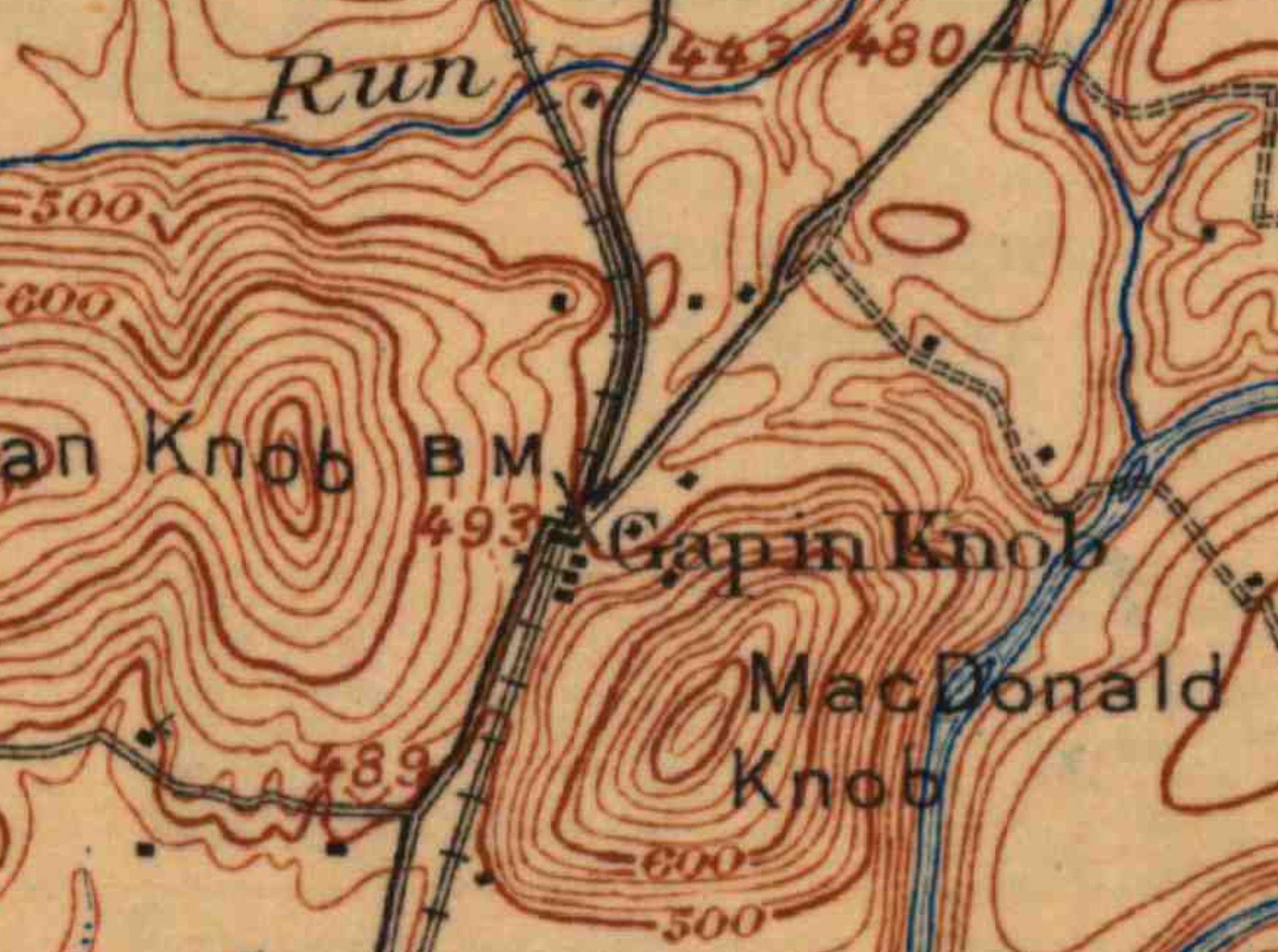
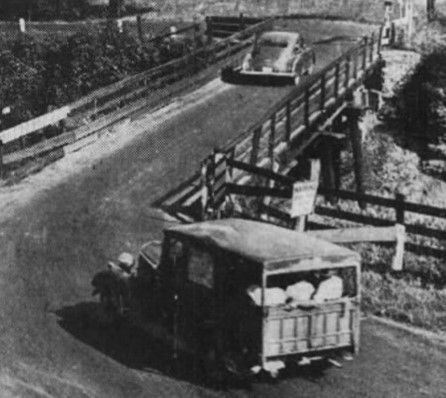
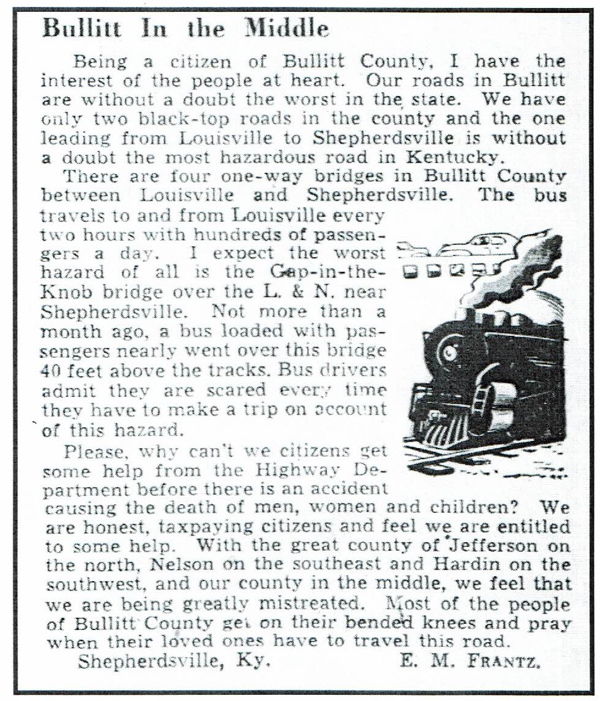
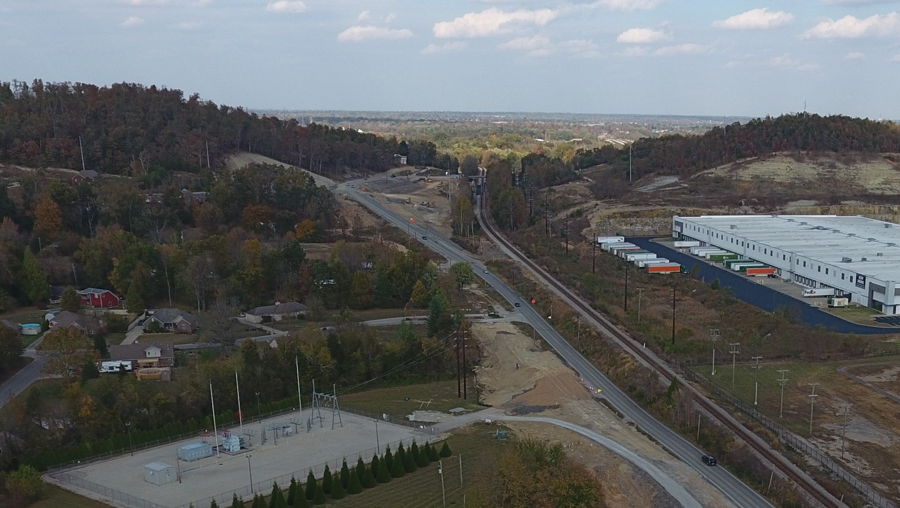
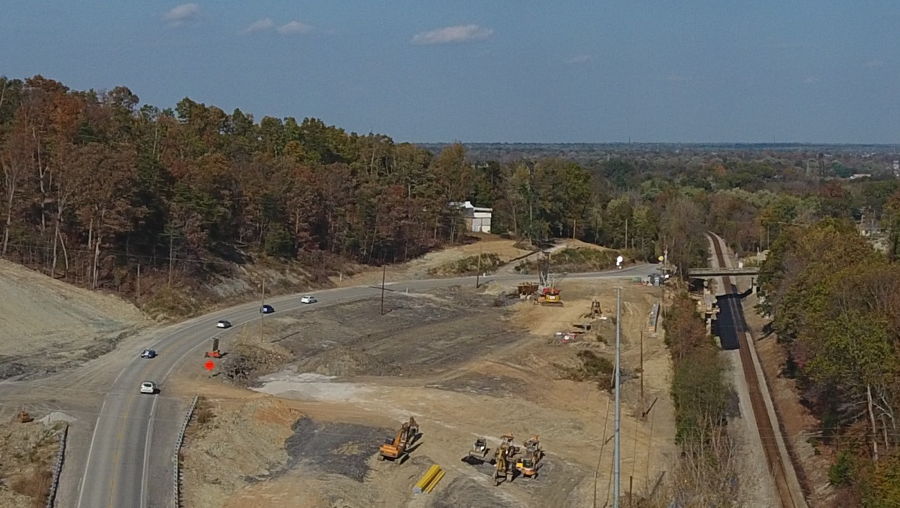
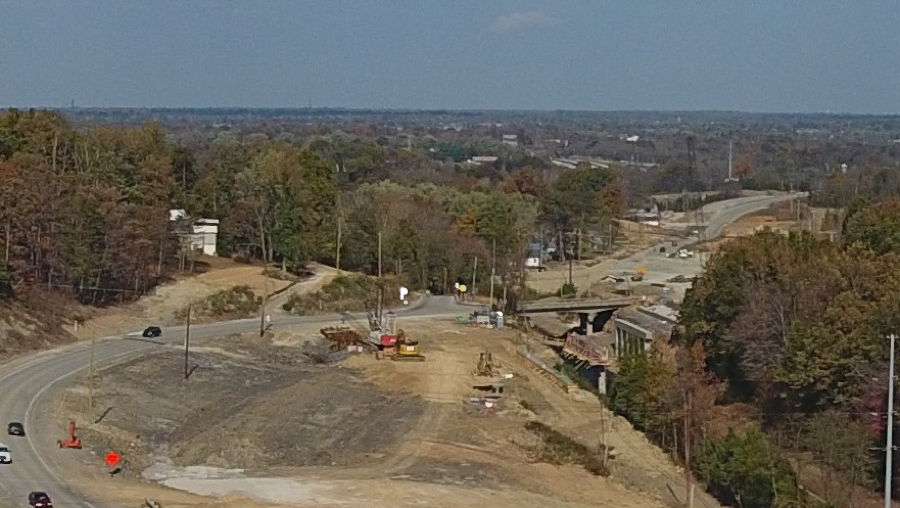
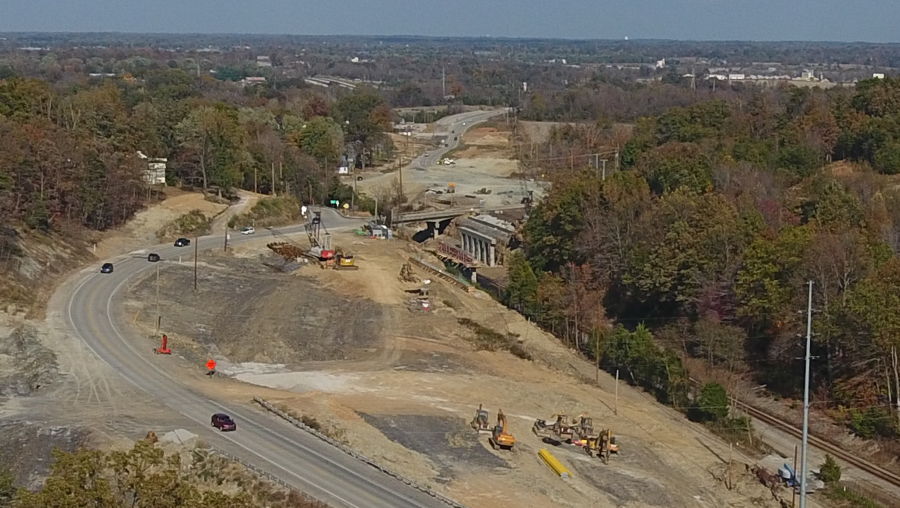
"Gap In Knob" is about the most accurate name for a place that I can think of. At least it was.
You see, it is not so much of a "gap" anymore.
Gap In Knob was once a narrow opening among several knobs, or hills, in Bullitt County. A fairly major branch of the Wilderness Road passed through the knobs a couple of miles to the west, called the Blue Lick gap, and several routes of travel, such as Floyd's Fork were available in the flatlands farther to the east. Gap In Knob lay in between, sandwiched between Coleman Knob and MacDonald Knob, on a direct line between Shepherdsville and Louisville. At one time, Gap In Knob was just wide enough for an animal path, one of several minor paths on which bison and other migratory animals made their way in ages gone by.
Also seen on maps as "Gap-N-Knob" or "Gapin Knob" (which caused some people to think it was named after some person named "Gapin"), the little bottleneck of transportation created both trouble and opportunity over the years.
It was barely more than a path through the hills for millennia, but then pioneers widened it a little to allow for horses and wagons. Around 1855, the new Louisville & Nashville Railroad Company was looking for a path for its tracks. Learning that the Gap was really the only practical way through that area, a deep trench was dug, making the gap more passable for the trains.
A railroad depot was built there and a small settlement developed on its edges among the hills. A little general store stood nearby for many years. Fairly major train wrecks occurred at the depot in 1899 and 1916.
A bit more hill was cut away and a relatively substantial road was built through the gap, eventually becoming part of Highway 61, with a bridge crossing over the channel of railroad track below. But that early bridge and road was designed more for horse and wagon traffic. When cars came along, the one-lane road and bridges became a problem. As late as 1949, people were still using the original road, but not liking it.
Sam Grider moved to Bullitt County from Butchertown in 1944. He remembers the old wood and metal one-lane bridge that crossed above the tracks at Gap In Knob. There were sharp, 90-degree bends at each end of the bridge (because road design at that time used the shortest-possible bridge-length to cross), and then the road turned sharply to follow the railroad tracks. Lynn Eddington tells me that the original road on the north end of the Gap turned sharply north, following close along the tracks, which is not the path of the road today. Sam Grider remembers that buses crossing the bridge would invariably scrape the guard rails as they squeezed around the turns.
Bob Druin remembers those old Kentucky Bus Line buses. Only a little bigger than half the size of most modern buses, several runs a day were made between Shepherdsville and Louisville. Pick-up stations were at the old post office in the middle of downtown Shepherdsville, as well as the nearby telephone company building. But really, all one had to do was wave down the bus as it passed by, and it would pick you up. Bob says there would have been no way a modern-size bus could have crossed the bridge and made those sharp turns.
Harold Hardy and others helped lead the charge to improve that old Highway 61, organizing the Bullitt County Planning and Development Association to press home the case. An October 17, 1949 Courier-Journal story recounted the myriad problems with the road all along 61 at the time, especially at the Gap In Knob bridge. The most critical problem was that newer, larger trucks such as semi-trailer trucks simply could not make it through the Gap. There was no Interstate 65, yet; so quite literally, large trucks could not get to Shepherdsville from Louisville. Large items could only be carried via the railroad, which pretty much froze any hope of commercial development south of the Gap.
By the early 1950's, roads and bridges along the way were replaced. A new two-lane bridge over the railroad at the Gap was built, and a part of one hill was cut away, making the Gap wide enough to allow a wider sweep of the road as vehicles moved off and onto the bridge.
I suppose that a nice little widow woman that I knew, named Carrie Harris, saw all the changes as she raised her seven children in a little frame house on the side of hill on Highway 1020, nearby. For more years than anyone can say, Carrie loved to sit on her front porch whenever she could, waving at cars as they passed by.
And now a brand new, four-lane road and double bridge is being built to replace that now-deteriorating concrete bridge. Considerably more of the hillsides at the Gap have been cut away for the modern roadway, and that is where I leave you.
"Gap In Knob" is hardly just a narrow gap in the hills anymore. Once the new thoroughfare is complete, travelers will scarcely notice any narrowness at all.
Except for you, few people will know that bison once trod there, head-to-tail, through the trees. Few will remember that a railroad depot and a small store once stood in the middle of where a highway now slices broadly through the hills.
And fewer still will realize that once upon a time, the hills were so close that one could hardly walk between them.
A mere Gap in the Knobs.
Copyright 2016 by David Strange, Shepherdsville KY. All rights are reserved. No part of the content of this page may be included in any format in any place without the written permission of the copyright holder.
The Bullitt County History Museum, a service of the Bullitt County Genealogical Society, is located in the county courthouse at 300 South Buckman Street (Highway 61) in Shepherdsville, Kentucky. The museum, along with its research room, is open 10 a.m. to 4 p.m. Monday through Friday. Saturday appointments are available by calling 502-921-0161 during our regular weekday hours. Admission is free. The museum, as part of the Bullitt County Genealogical Society, is a 501(c)3 tax exempt organization and is classified as a 509(a)2 public charity. Contributions and bequests are deductible under section 2055, 2106, or 2522 of the Internal Revenue Code. Page last modified: 12 Sep 2024 . Page URL: bullittcountyhistory.org/memories/gap_bridge.html